Three-Dimensional Inverse Design of Low Specific Speed Turbine for Energy Recovery in Cooling Tower System
Abstract
:1. Introduction
2. Materials and Methods
2.1. Three-Dimensional Inverse Design Method
2.2. Numerical Method
3. Design Parameter Analysis
3.1. Blade Loading Parameters
3.1.1. The After-Loading Point at the Band
3.1.2. The Front-Loading Point at the Band
3.1.3. The Front-Loading Point at the Crown
3.1.4. The After-Loading Point at the Crown
3.1.5. The Slope of the Blade Loading Distribution
3.1.6. Parameter Priority Analysis
3.2. Blade Lean Angle at Leading Edge
- (1)
- For blade loading design parameters, more attention should be payed to the loading distribution at the band and both the band and crown should be fore loaded.
- (2)
- For blade lean angles at the leading edge, negative values of the blade lean angles are suggested and the specific values should be within 0° and −5°.
3.3. Verification of the Design Criteria
4. Conclusions
- (1)
- The blade loading parameters at the band have greater effect than the crown. And the most essential parameter is the front-loading point at the band. Both the band and crown should be fore loaded, which is beneficial to a more uniform pressure distribution and a better cavitation performance.
- (2)
- The blade lean angle at the leading edge of the blade should be negative, which means the blade at the band is ahead of it at the crown in the rotation direction. Specifically, the blade lean angle at the leading edge of the blade should be within 0° and −5° for the studied LSST.
Author Contributions
Funding
Conflicts of Interest
References
- Goshayshi, H.R.; Missenden, J.F.; Tozer, R. Cooling Tower—An Energy Conservation Resource. Appl. Therm. Eng. 1999, 11, 1223–1235. [Google Scholar] [CrossRef]
- Guang, Y.J.; Wen, J.C.; Lu, L.; Eng, L.L.; Andrew, C. A Simplified Modeling of Mechanical Cooling Tower for Control and Optimization of HVAC Systems. Energy Convers. Manag. 2007, 2, 355–365. [Google Scholar]
- Zhang, H.C.; Fang, L.; Guang, H.; Niu, Y. Review on Water Distribution of Cooling Tower in Power Station. In IOP Conference Series: Earth and Environmental Science; IOP: Sanya, China, 2018. [Google Scholar]
- Singh, R.; Cabibbo, S. Hydraulic Turbine Energy Recovery-R.O. System. Desalination 1980, 32, 281–296. [Google Scholar] [CrossRef]
- Gopalakrishnan, S. Power Recovery Turbines for the Process Industry. Pump Symposium, 1st ed.; Texas A & M University: College Station, TX, USA, 1986. [Google Scholar]
- Li, Y.P.; Nan, H.P.; Duan, K.C. Determination of Key Technical Parameters of Special Hydraulic Turbine for Cooling Tower. Manuf. Sci. Technol. 2012, 383, 1386–1390. [Google Scholar] [CrossRef]
- Zhang, L.J.; Wang, L.; Ren, Y. Characteristic Analysis of Francis-Turbine in Cooling Tower. Appl. Mech. Mater. 2012, 190, 57–59. [Google Scholar] [CrossRef]
- Zhang, L.J.; Ren, Y.; Li, Y.P.; Chen, D.X. Hydraulic Characteristic of Cooling Tower Francis Turbine with Different Spiral Casing and Stay Ring. Energy Procedia 2012, 16, 651–655. [Google Scholar] [CrossRef]
- Li, Y.P.; Ma, J.P.; Chen, D.X. Work Characteristics and Type Selection of Special Turbine in Hydrodynamic Cooling Tower. Appl. Mech. Mater. 2011, 48, 1368–1371. [Google Scholar] [CrossRef]
- Boeges, J.E. A Three-Dimensional Inverse Method for Turbomachinery: Part I—Theory. J. Turbomach. 1990, 3, 346–354. [Google Scholar]
- Zangeneh, M.; Goto, A.; Harada, H. On the Design Criteria for Suppression of Secondary Flows in Centrifugal and Mixed Flow Impellers. J. Turbomach. 1998, 4, 723–735. [Google Scholar] [CrossRef]
- Goto, A.; Zangeneh, M. Hydrodynamic Design of Pump Diffuser Using Inverse Design Method and CFD. J. Fluids Eng. 2002, 2, 319–328. [Google Scholar] [CrossRef]
- Bonaiuti, D. On the Coupling of Inverse Design and Optimization Techniques for the Multiobjective, Multipoint Design of Turbomachinery Blades. J. Turbomach. 2009, 131, 1–16. [Google Scholar] [CrossRef]
- Okamoto, H.; Goto, A. Suppression of Cavitation in a Francis Turbine Runner Using 3D Inverse Design Method. In Proceedings of the 2002 Joint US ASME-European Fluids Engineering Summer Conference, Montreal, WI, USA, 14–18 July 2002. [Google Scholar]
- Daneshkah, K.; Zangeneh, M. Parametric Design of a Francis Turbine Runner by Means of a Three-Dimensional Inverse Design Method. In Proceedings of the 25th IAHR Symposium on Hydraulic Machinery and Systems, Timişoara, Romania, 20–24 September 2010. [Google Scholar]
- Yang, W.; Xiao, R.F. Multiobjective Optimization Design of a Pump–Turbine Impeller Based on an Inverse Design Using a Combination Optimization Strategy. J. Fluids Eng. 2013, 136, 014501. [Google Scholar] [CrossRef]
- Vinuesa, R.; Hosseini, S.M.; Hanifi, A.; Henningson, D.S.; Schlatter, P. Pressure-Gradient Turbulent Boundary Layers Developing around a Wing Section. Flow Turbul. Combust. 2017, 99, 613–641. [Google Scholar] [CrossRef] [PubMed]
- Vinuesa, R.; Nagib, H.M. Enhancing the Accuracy of Measurement Techniques in High Reynolds Number Turbulent Boundary Layers for More Representative Comparison to Their Canonical Representations. Eur. J. Mech. B/Fluids 2016, 55, 300–312. [Google Scholar] [CrossRef]
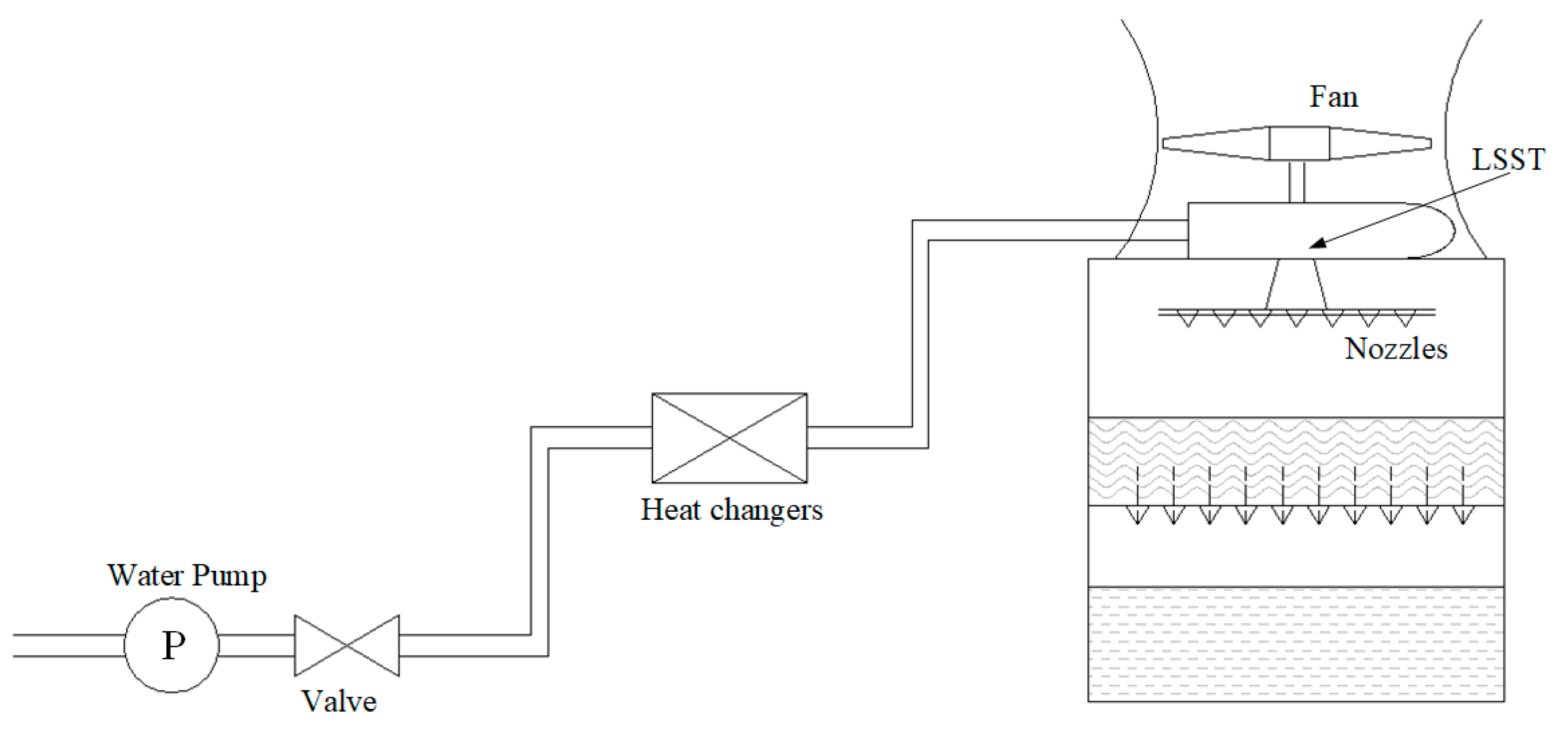
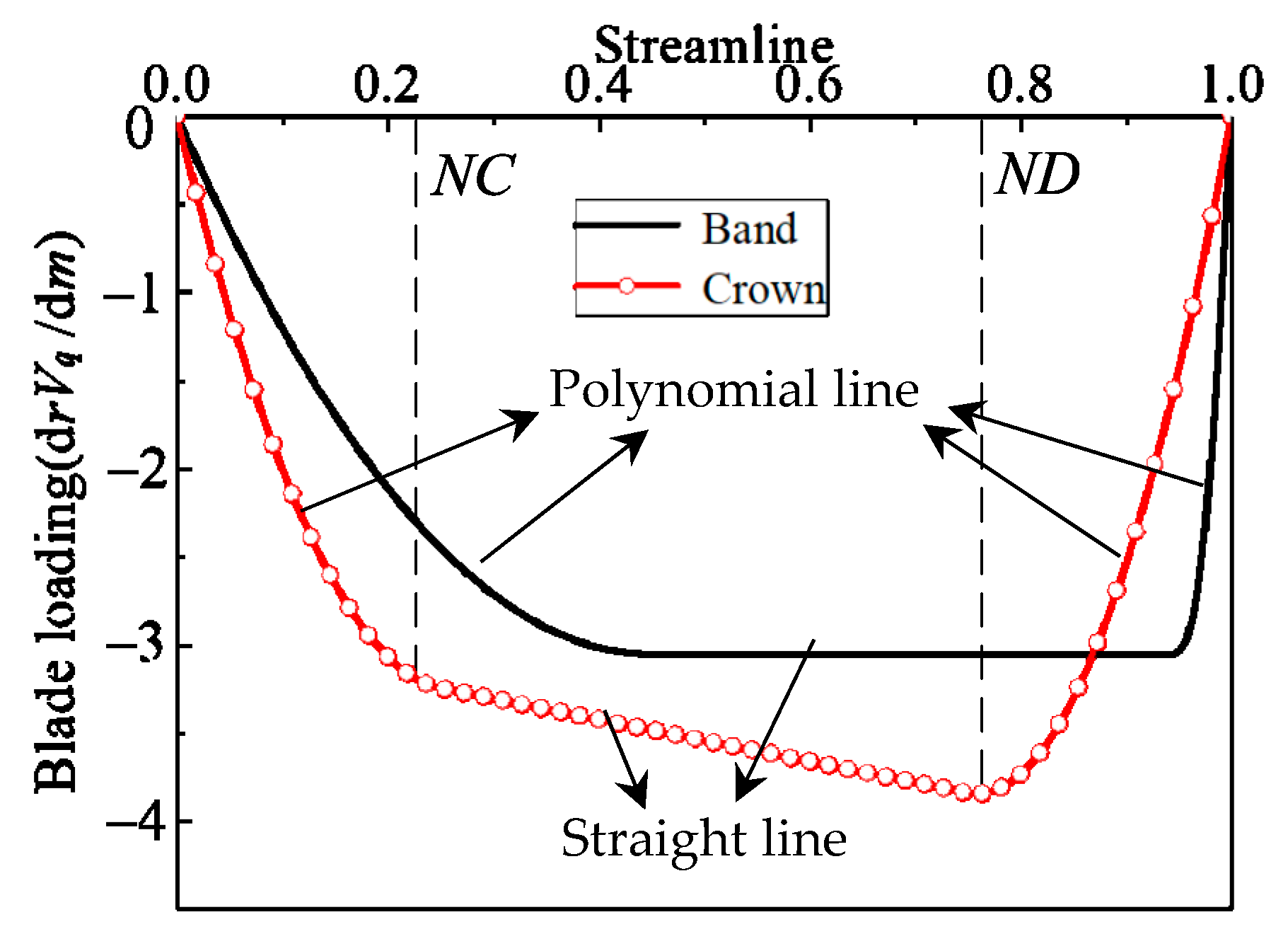
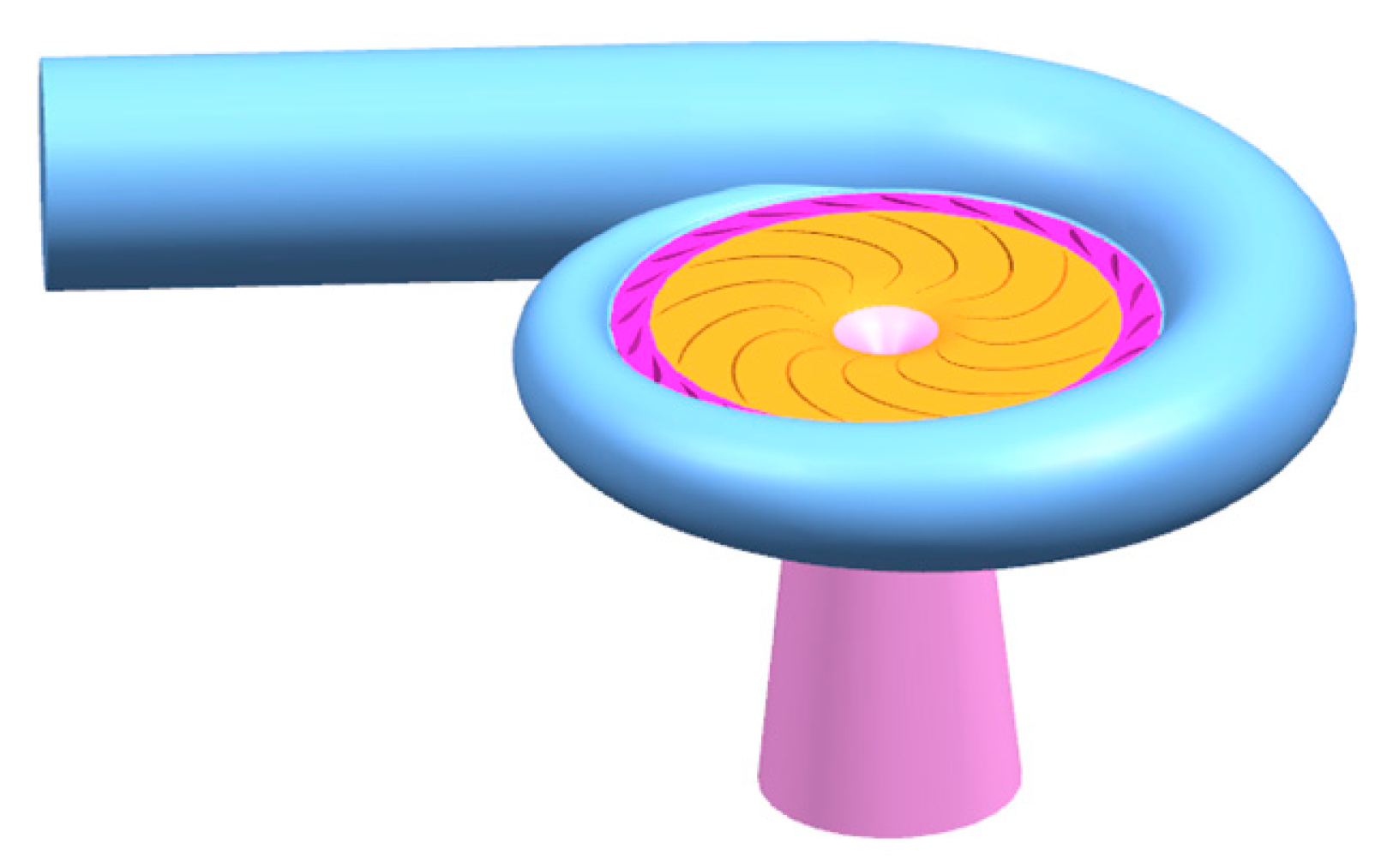
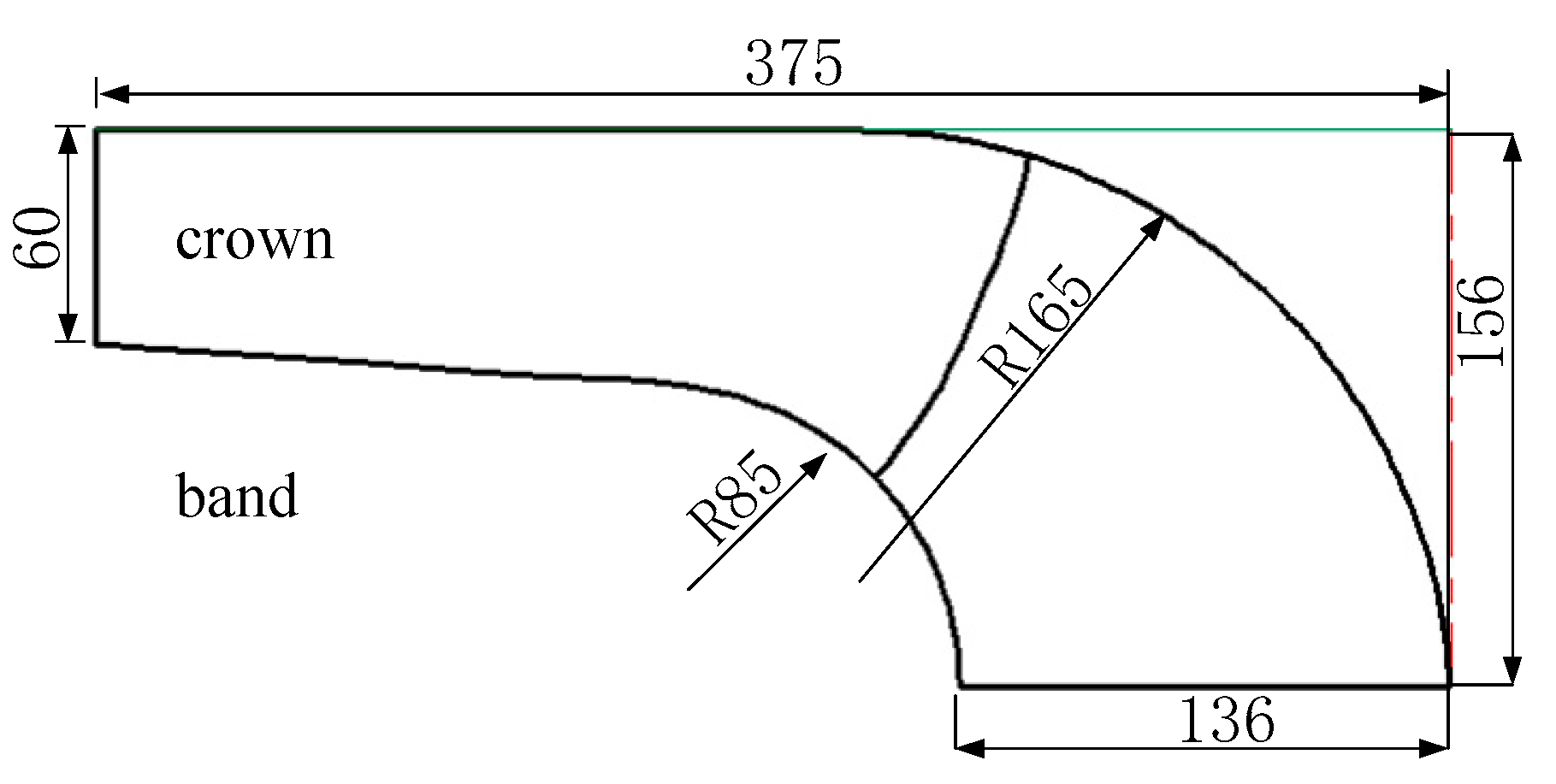

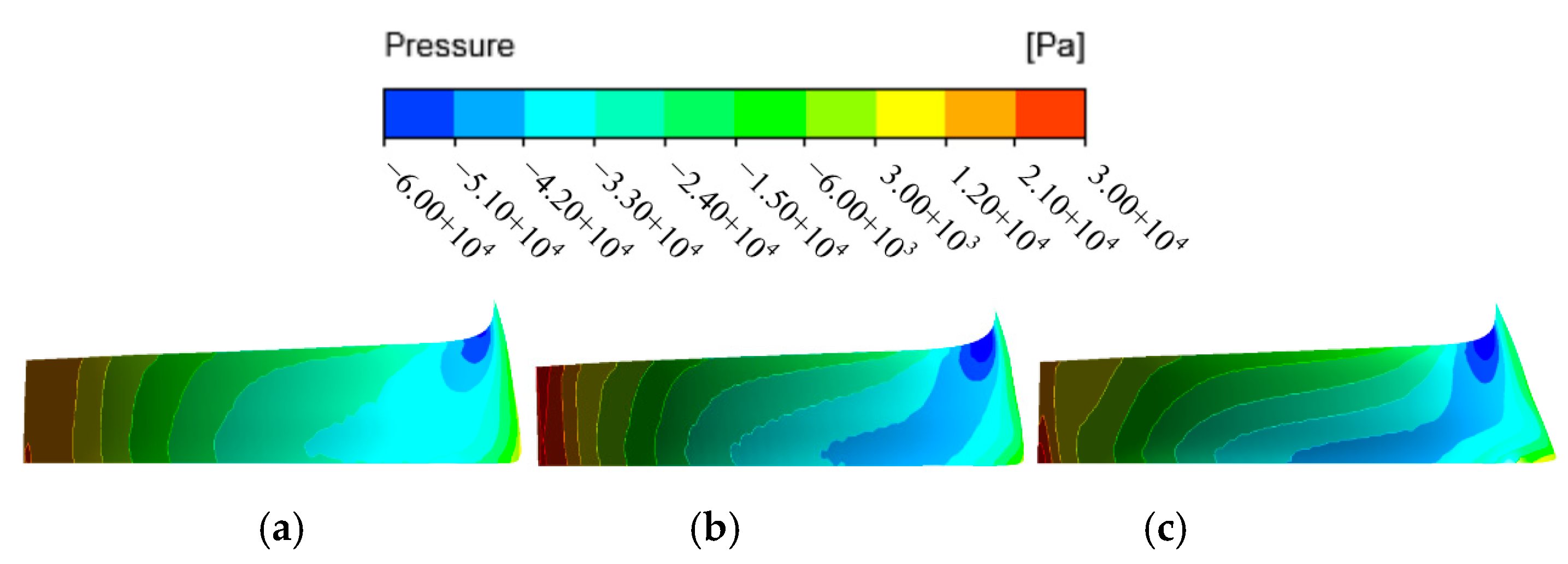
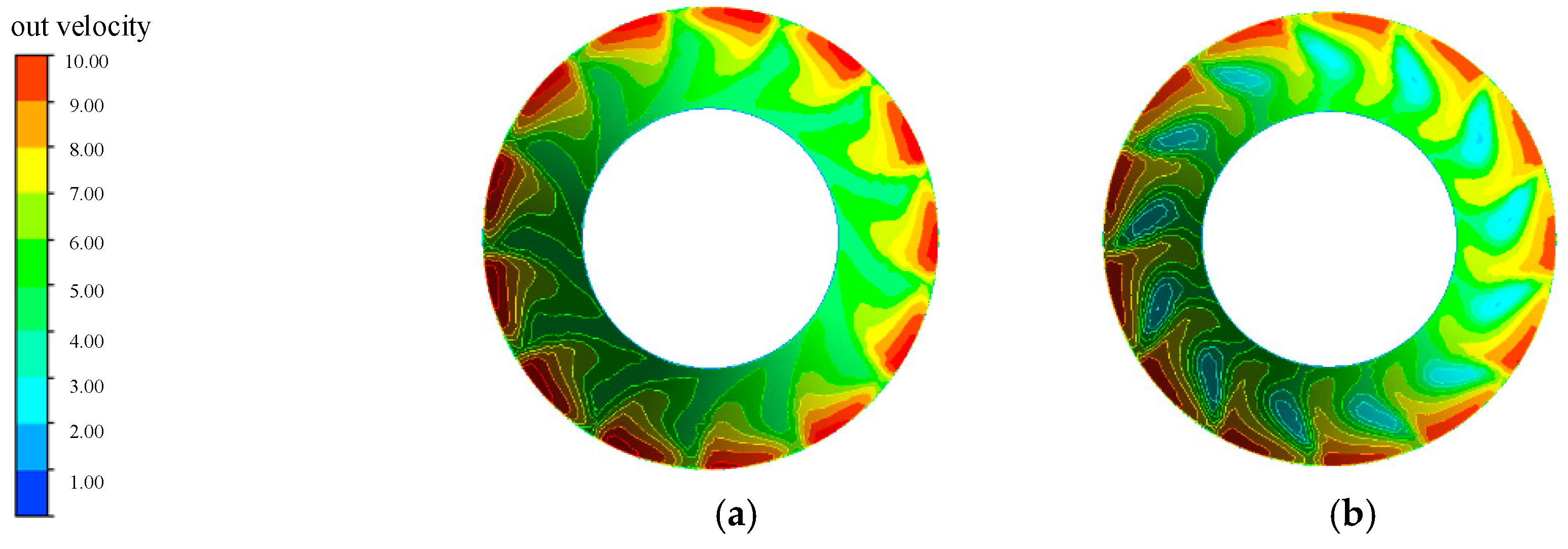

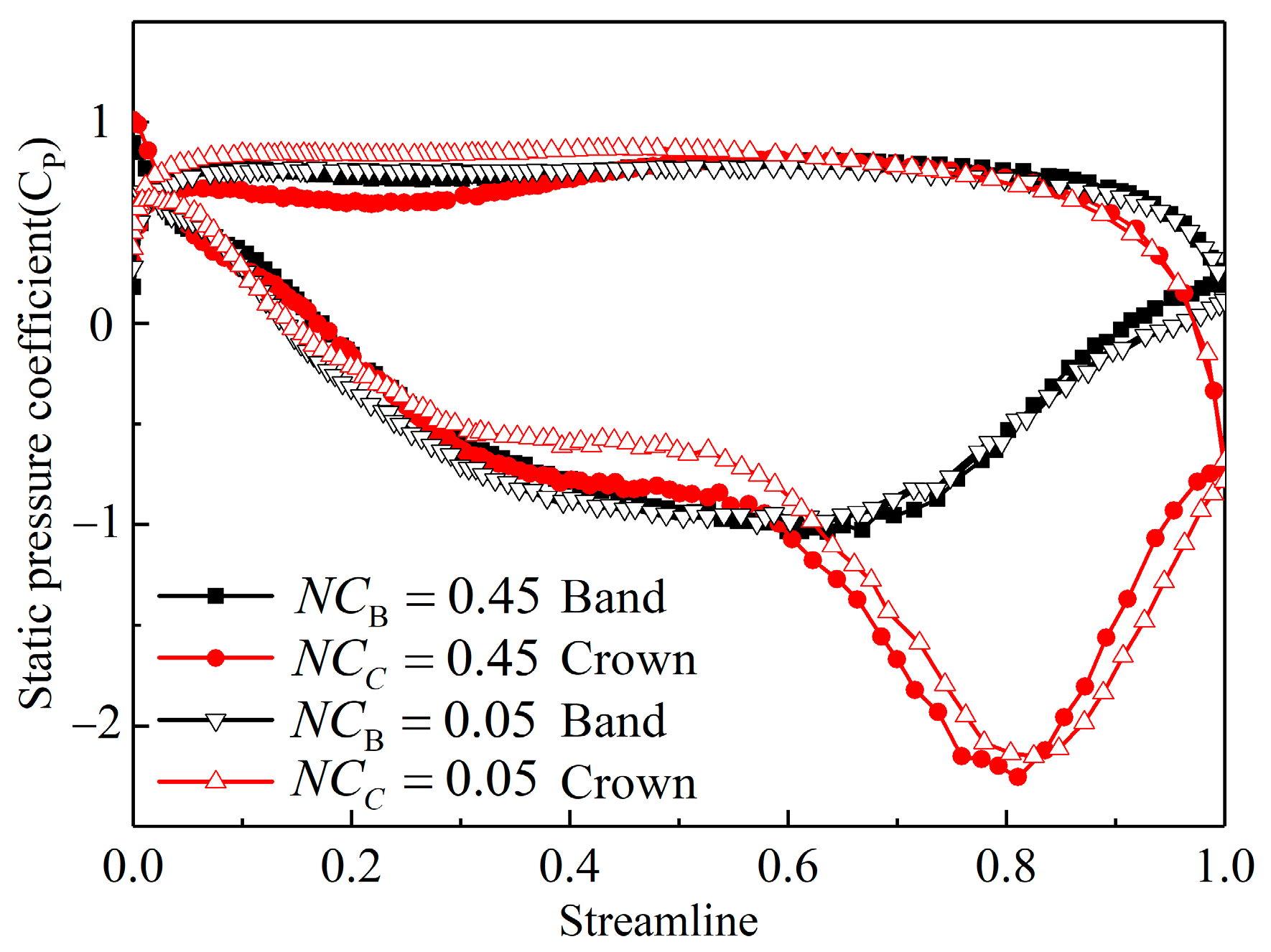
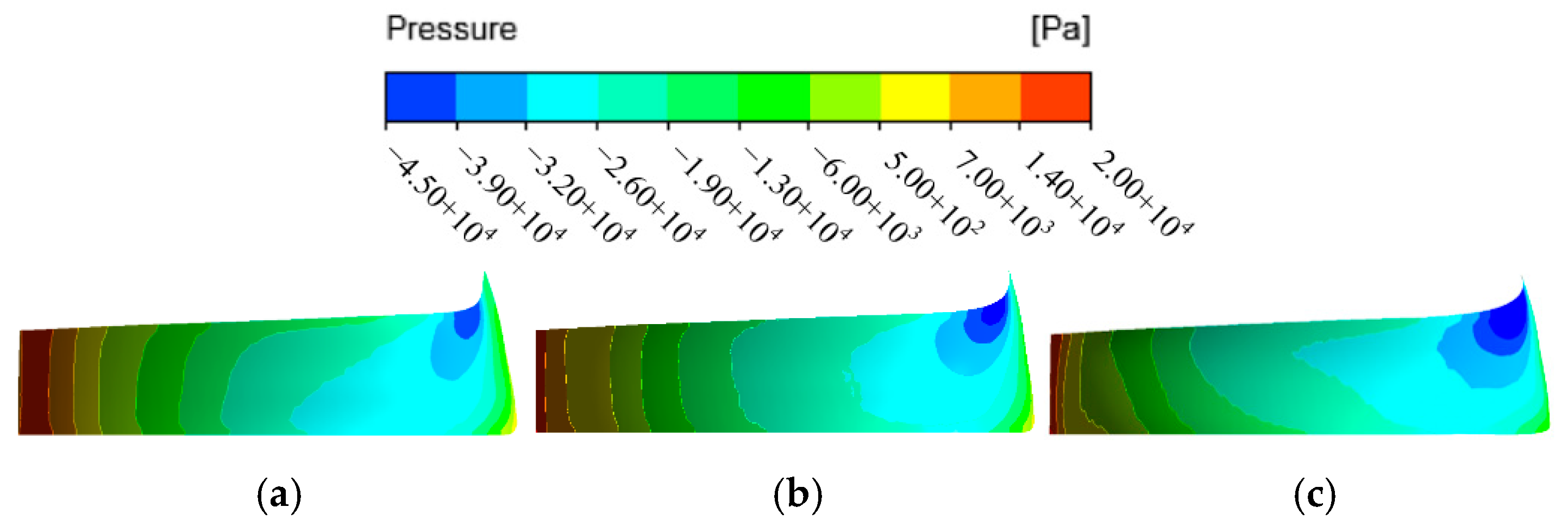
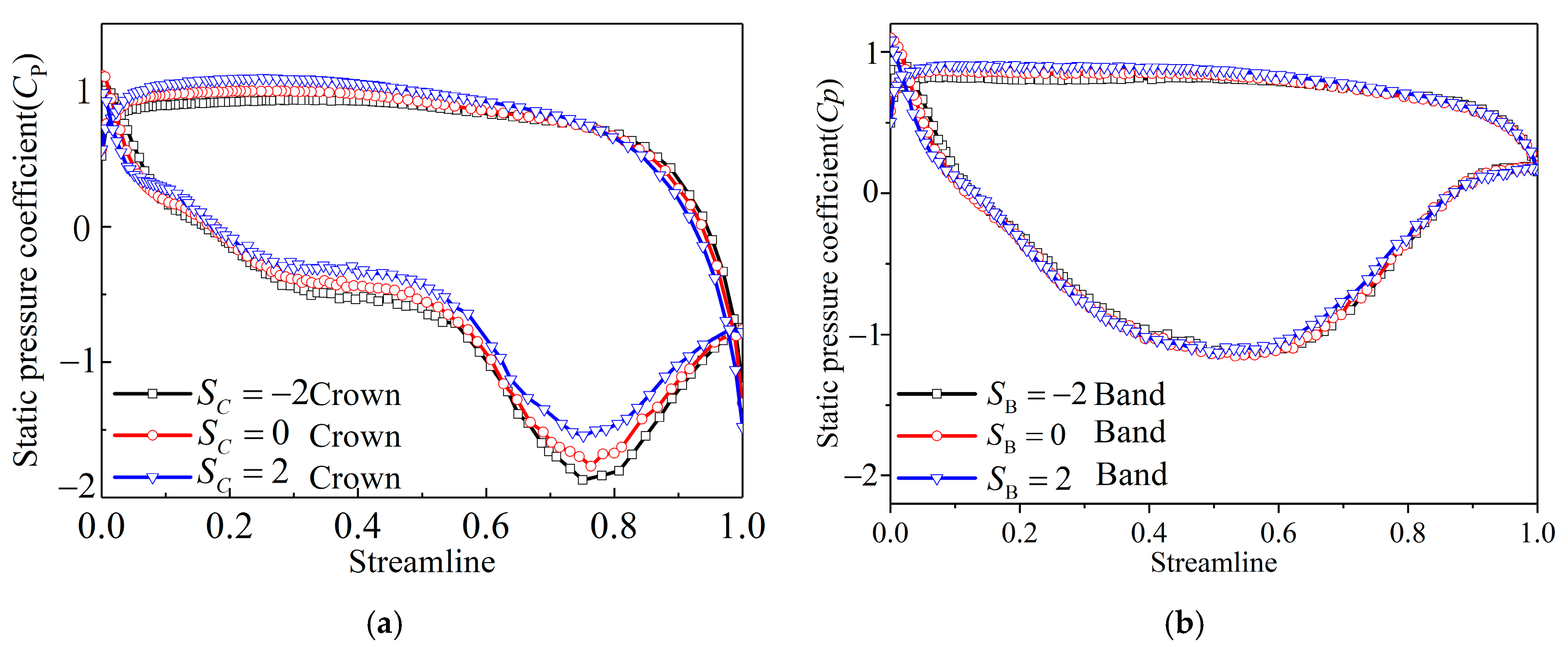
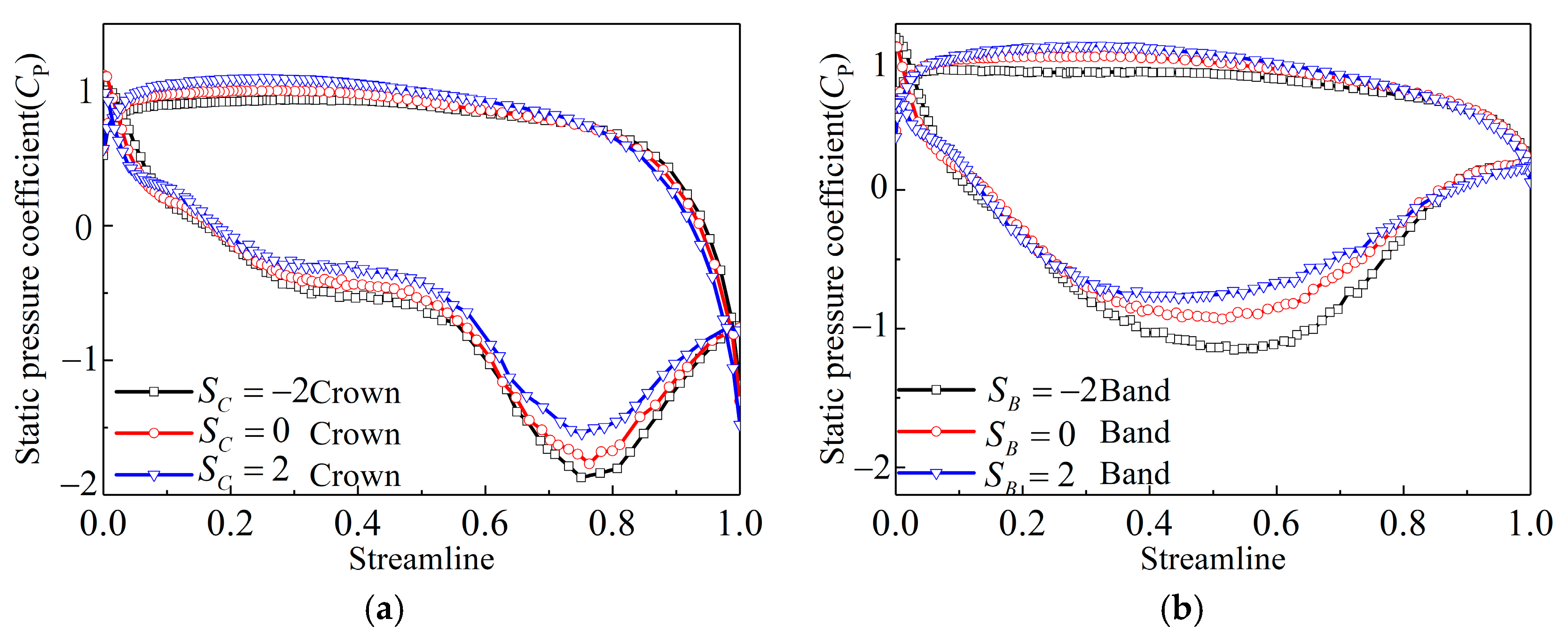
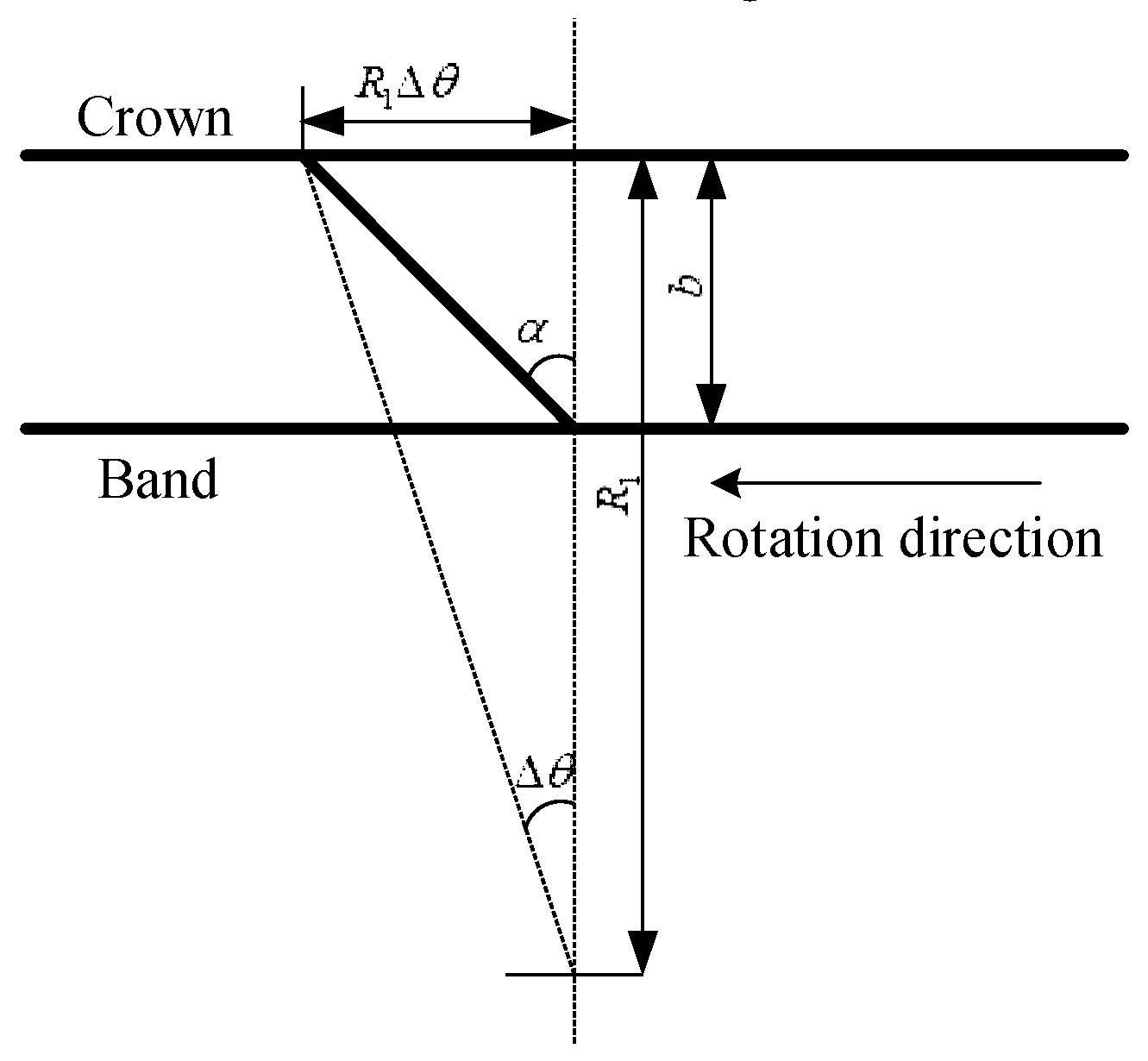
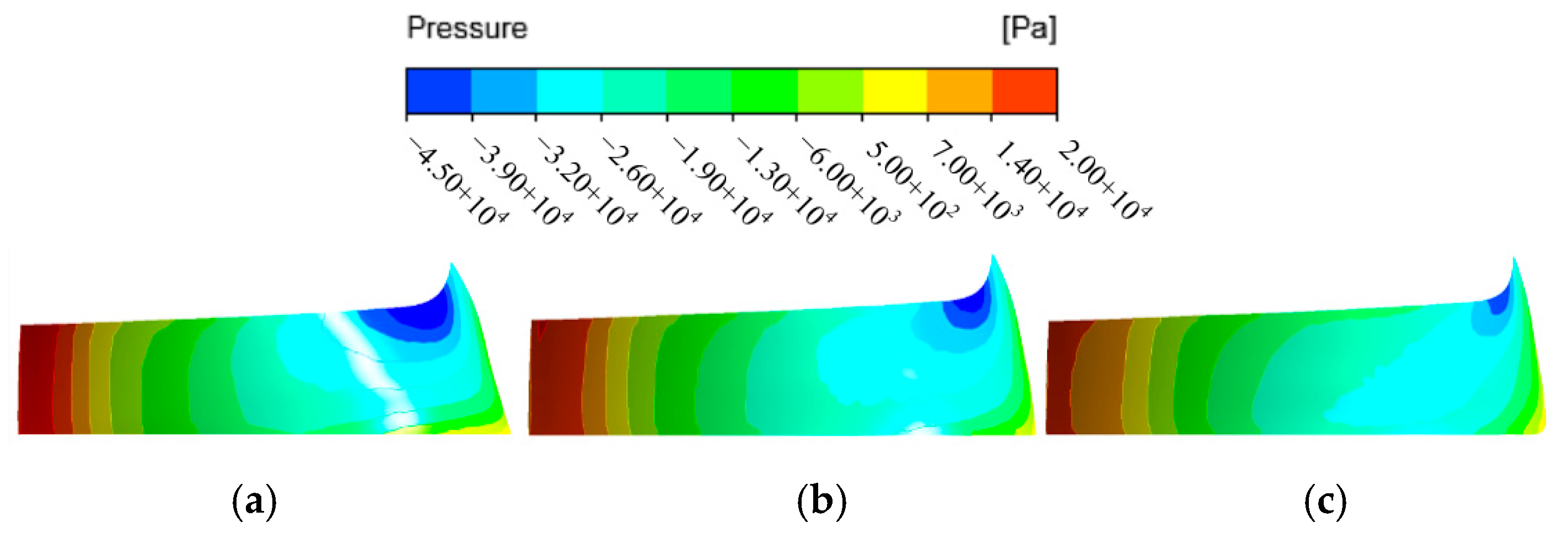

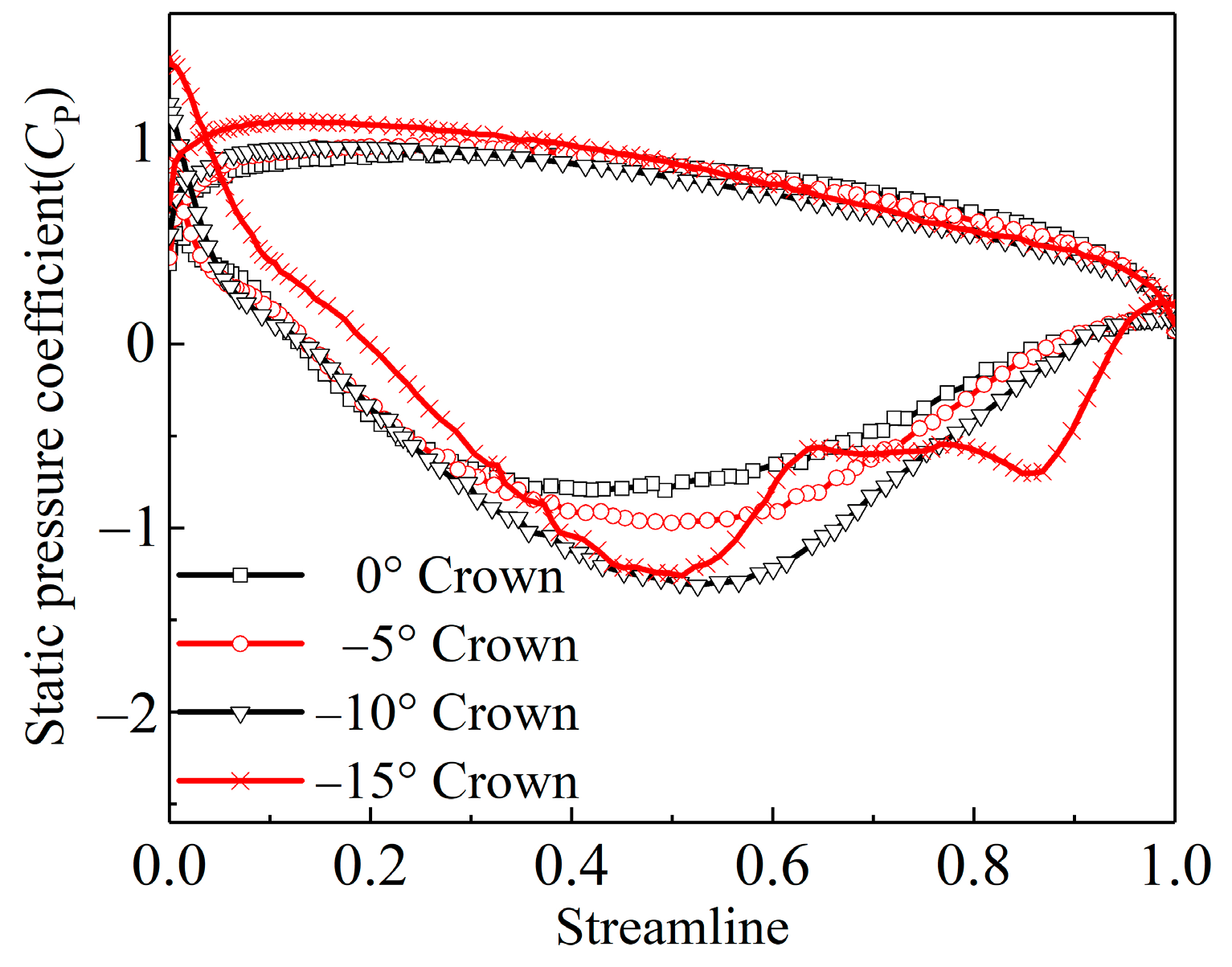
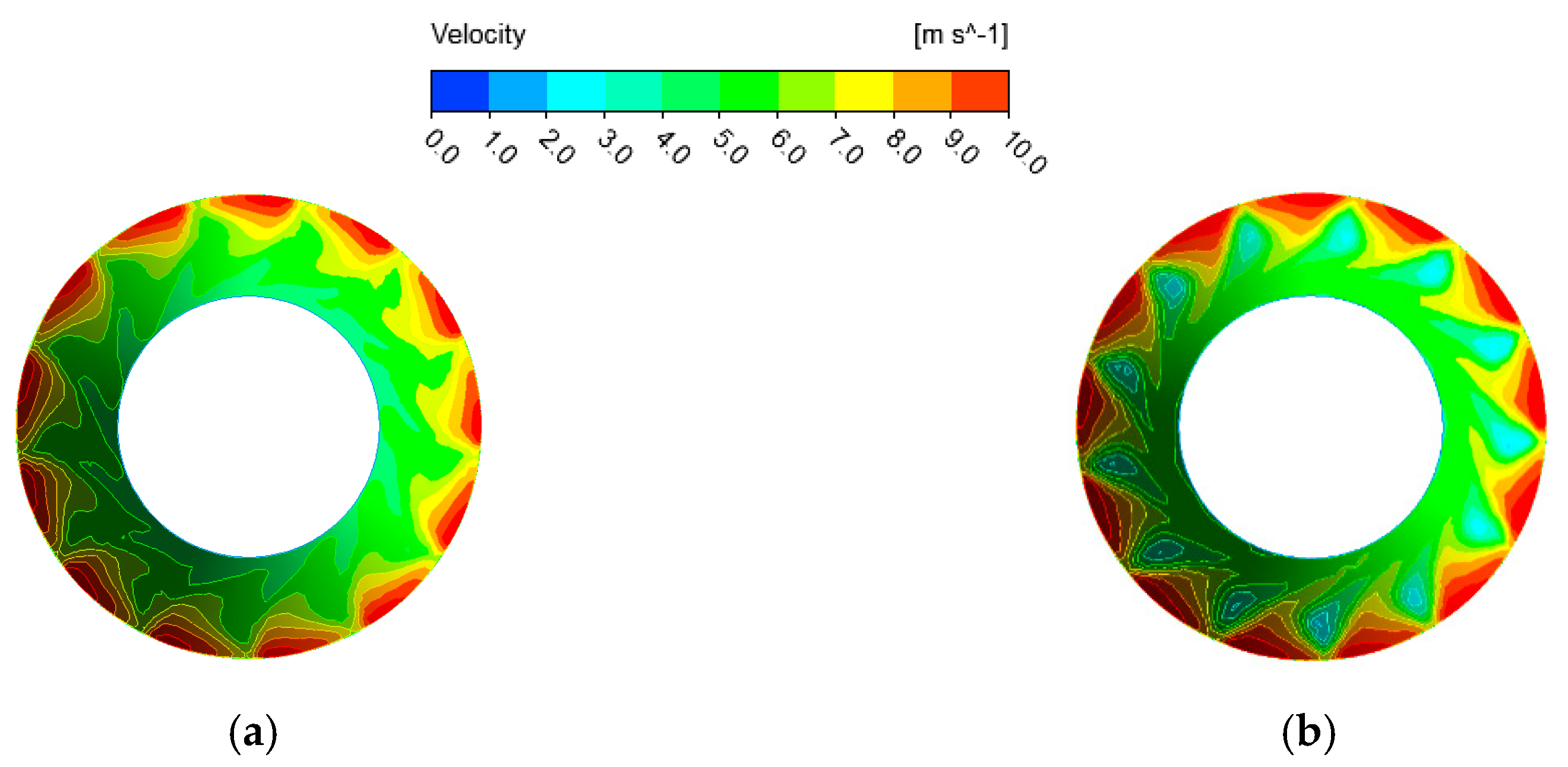
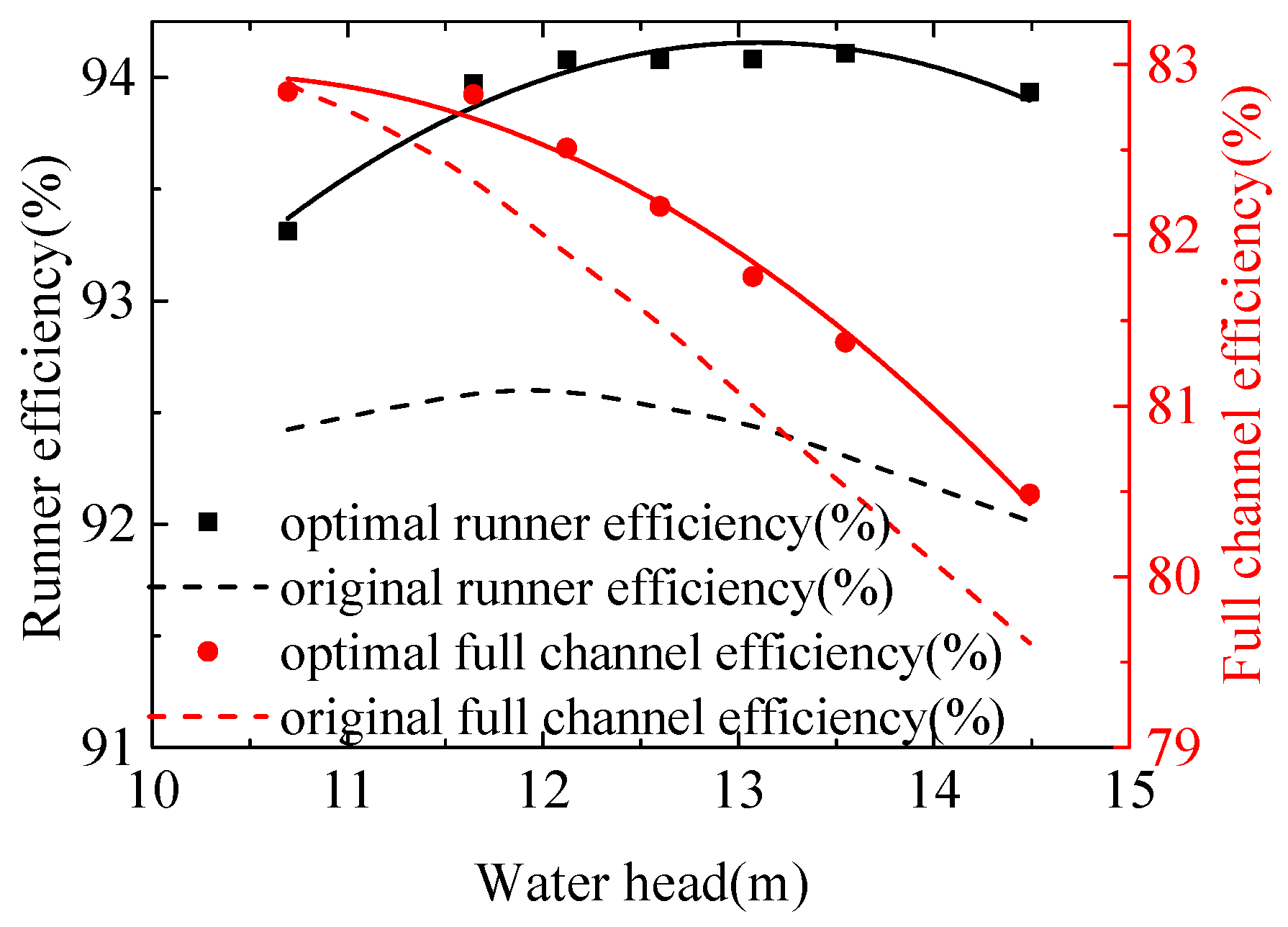
| Number | NC | ND | SB | SC |
|---|---|---|---|---|
| 1 | 0.05 | 0.55 | −2 | −2 |
| 2 | 0.05 | 0.55 | −2 | 0 |
| 3 | 0.05 | 0.55 | −2 | 2 |
| 4 | 0.05 | 0.55 | 0 | 0 |
| 5 | 0.05 | 0.55 | 2 | 0 |
| Parameters | NCB | NDB | SB | NCC | NDC | SC |
|---|---|---|---|---|---|---|
| Level 1 | 0.05 | 0.55 | −2 | 0.05 | 0.55 | −2 |
| Level 2 | 0.25 | 0.75 | 0 | 0.25 | 0.75 | 0 |
| Level 3 | 0.45 | 0.95 | 2 | 0.45 | 0.95 | 2 |
| Efficiency | NCB | NDB | SB | NCC | NDC | SC |
|---|---|---|---|---|---|---|
| 1111.93 | 1109.28 | 1090.34 | 1107.08 | 1104.02 | 1098.19 | |
| 1098.95 | 1101.85 | 1101.45 | 1098.61 | 1101.96 | 1099.52 | |
| 1090.42 | 1090.17 | 1109.51 | 1095.60 | 1095.32 | 1103.58 | |
| 92.66 | 92.44 | 90.86 | 92.26 | 92.00 | 91.52 | |
| 91.58 | 91.82 | 91.79 | 91.55 | 91.83 | 91.63 | |
| 90.87 | 90.85 | 92.46 | 91.30 | 91.28 | 91.97 | |
| 1.79 | 1.59 | 1.60 | 0.96 | 0.72 | 0.45 |
| NCB | NDB | SlopeB | NCC | NDC | SlopeC |
|---|---|---|---|---|---|
| 0.05 | 0.55 | 2 | 0.05 | 0.596 | 1.3356 |
© 2018 by the authors. Licensee MDPI, Basel, Switzerland. This article is an open access article distributed under the terms and conditions of the Creative Commons Attribution (CC BY) license (http://creativecommons.org/licenses/by/4.0/).
Share and Cite
Yang, W.; Lei, X.; Liu, B. Three-Dimensional Inverse Design of Low Specific Speed Turbine for Energy Recovery in Cooling Tower System. Energies 2018, 11, 3348. https://doi.org/10.3390/en11123348
Yang W, Lei X, Liu B. Three-Dimensional Inverse Design of Low Specific Speed Turbine for Energy Recovery in Cooling Tower System. Energies. 2018; 11(12):3348. https://doi.org/10.3390/en11123348
Chicago/Turabian StyleYang, Wei, Xiaoyu Lei, and Benqing Liu. 2018. "Three-Dimensional Inverse Design of Low Specific Speed Turbine for Energy Recovery in Cooling Tower System" Energies 11, no. 12: 3348. https://doi.org/10.3390/en11123348
APA StyleYang, W., Lei, X., & Liu, B. (2018). Three-Dimensional Inverse Design of Low Specific Speed Turbine for Energy Recovery in Cooling Tower System. Energies, 11(12), 3348. https://doi.org/10.3390/en11123348





